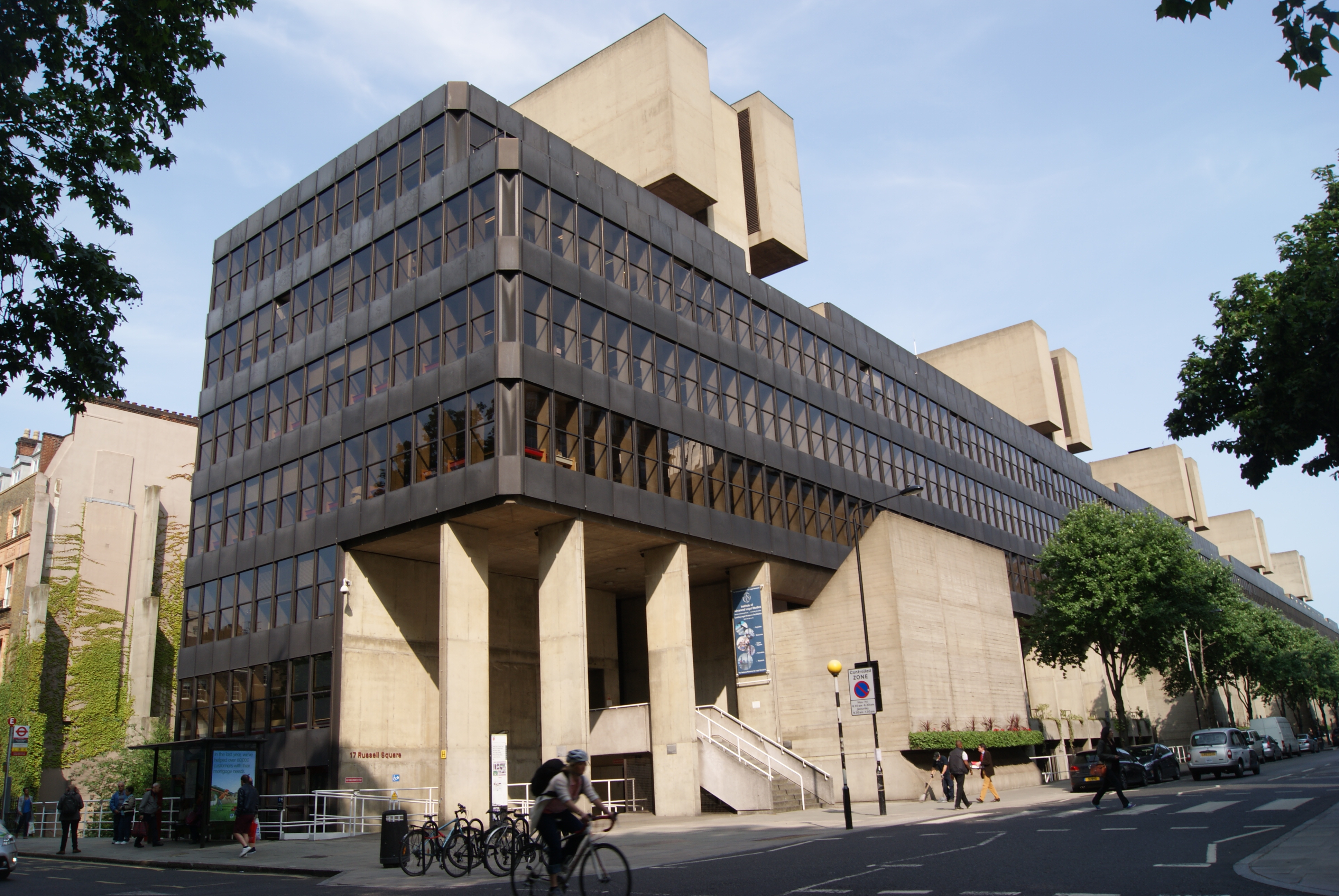“You think you'd
like to play ball with the law?” – Bob Dylan*
The Institute of Advanced Legal Studies (
IALS) has been
housed in Charles Clore House since 1976, a long, brooding, Brutalist building
designed by National Theatre architect Sir Denys Lasdun. The institute itself
has been around since 1947. Four dedicated graduate trainees made their way to
Russell Square on a chilly-but-bright Tuesday afternoon for what promised to be
an interesting afternoon in the hands of legal librarians.
The library entrance being on the 4
th floor,
it’s there that we met Access Librarian
Lisa Davies, who started off the visit
by giving us a 30 minute tour of the place. Split over four levels, the library
stocks around 180,000 volumes. This is split between primary legal material and
secondary legal material, the latter being interpretations or commentaries of
the former. Their own in-house classification system orders these works based
of geography or subject, meaning that not all books on a certain topic will be
found in the same area – this a not a library for the casual browser. As well
as books (in the broadest sense of the word), they also have a significant
range of legal journals from around the world.
The reading rooms are situated on the lower ground floor
(L2) up to the third floor, accessible through an internal lift. The 4th
floor holds the issue desk, photocopying room, library offices and a large open
access computer lab where users can access the internet and the library’s 70+
online and subscription-based databases. Although a lot of primary legal
material is becoming available online, the library has a duty to collect and archive
printed versions as well, and so provides both.
We were briefly shown the (stiflingly) warm reading rooms
with their utilitarian-looking desks and exciting views of Russell Square and
beyond. As well as normal work spaces, PhD students can rent a so-called carrel
– a small, private office with desk, lockable drawers, lamp etc. – for a small
weekly fee. Users of the IALS library are around 95% PhD/post-doctorate
students, institute staff or students from the University of London colleges,
but law firms can also pay a one-off/annual fee to use the library.
After the tour, it was off to the staff common room for a
cup of tea and chat with Lisa about her career and role as Access Librarian, a
role dedicated to promoting and improving access to the library through
advertising, outreach and off-site support. It was here we met one of the IALS
GTs too, Jamie.
Cups of tea aside, we made our way back to the librarian
offices for a quick talk about what the IALS library does to meet the
requirements of the Disability Discrimination Act 1995. We all contributed
thoughts about how our own libraries meet the requirements of the act, or don’t
in some cases, and discussed services that could be offered to users with
disabilities. It was a useful, thought provoking talk.
The final stage of the visit was a talk from
Helen Gaterell, Document Supply Supervisor. The IALS operates a profit-making
document supply service. The income from the service is re-invested into improving the academic library collections and services. There are two types of service on offer: standard (dispatched within
the day: £21.80) and express (dispatched in under 60 minutes: £43.60).
Subscribing practitioners/firms or academics will contact the library seeking
extensive copies of articles, cases or chapters from volumes held in the
library. These are then found, photocopied, scanned and sent to the respective
client to be used, on the whole, in court cases. Interestingly, there is
currently a large demand for material on Nigerian law, as, according the Helen,
there are lots of corporate cases involving Nigerians and Shell/BP taking place
at the moment.
And that was it! All over in a couple of hours, I felt
like we’d learnt a lot about a very (to me at least) unusual library. Although
I have no personal interest in playing ball with the law, I found the library’s
space surprisingly appealing, and the services on offer seemed well run and
efficient. Overall, an intriguing and enlightening trip!
*"Hurricane", Bob Dylan, http://bobdylan.com/songs/hurricane/
N.B.: Feel free to email the above mentioned librarians for more information!
 |
| Fig. 1: IALS, smuconlaw, https://en.wikipedia.org/wiki/Institute_of_Advanced_Legal_Studies |










